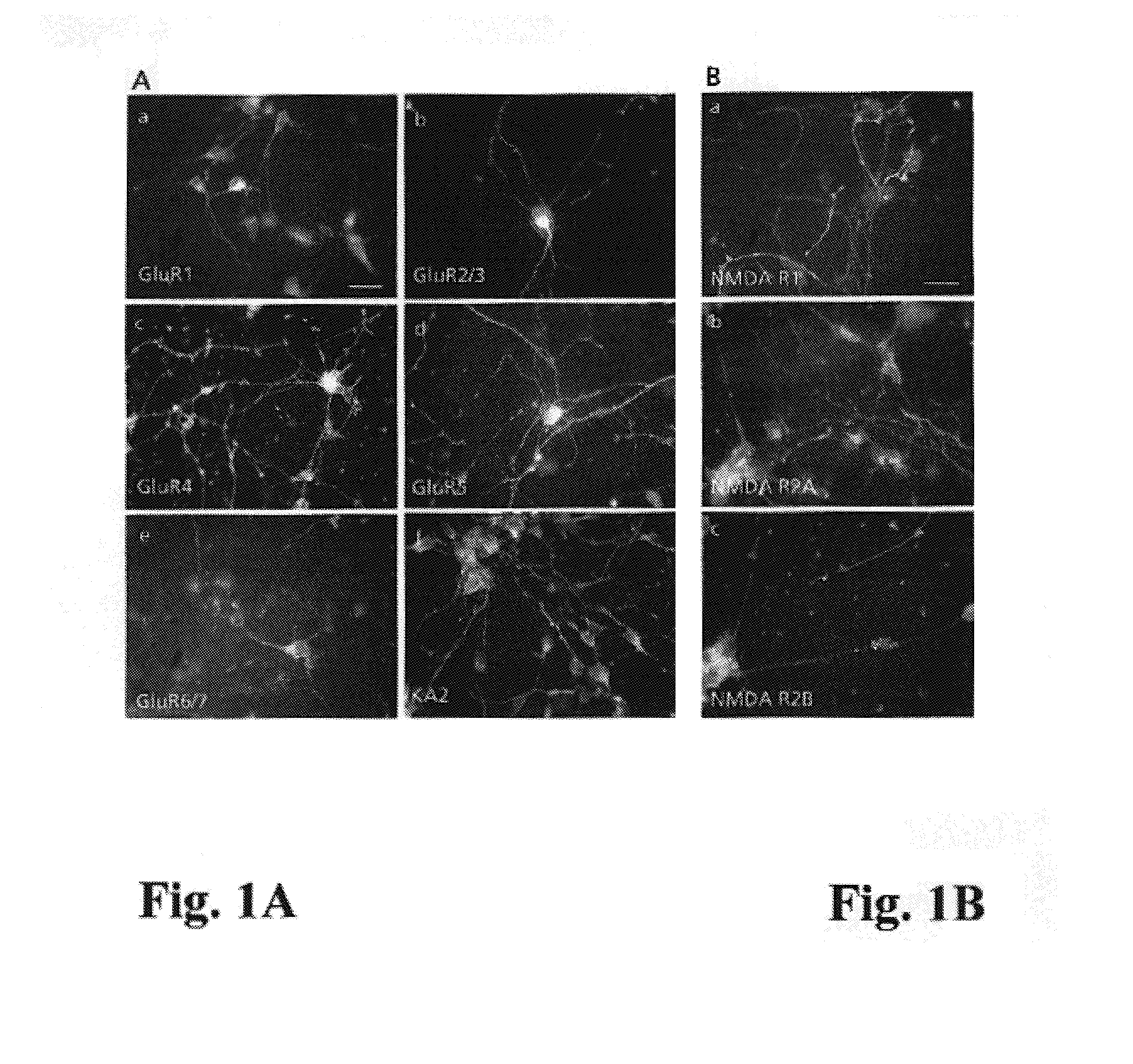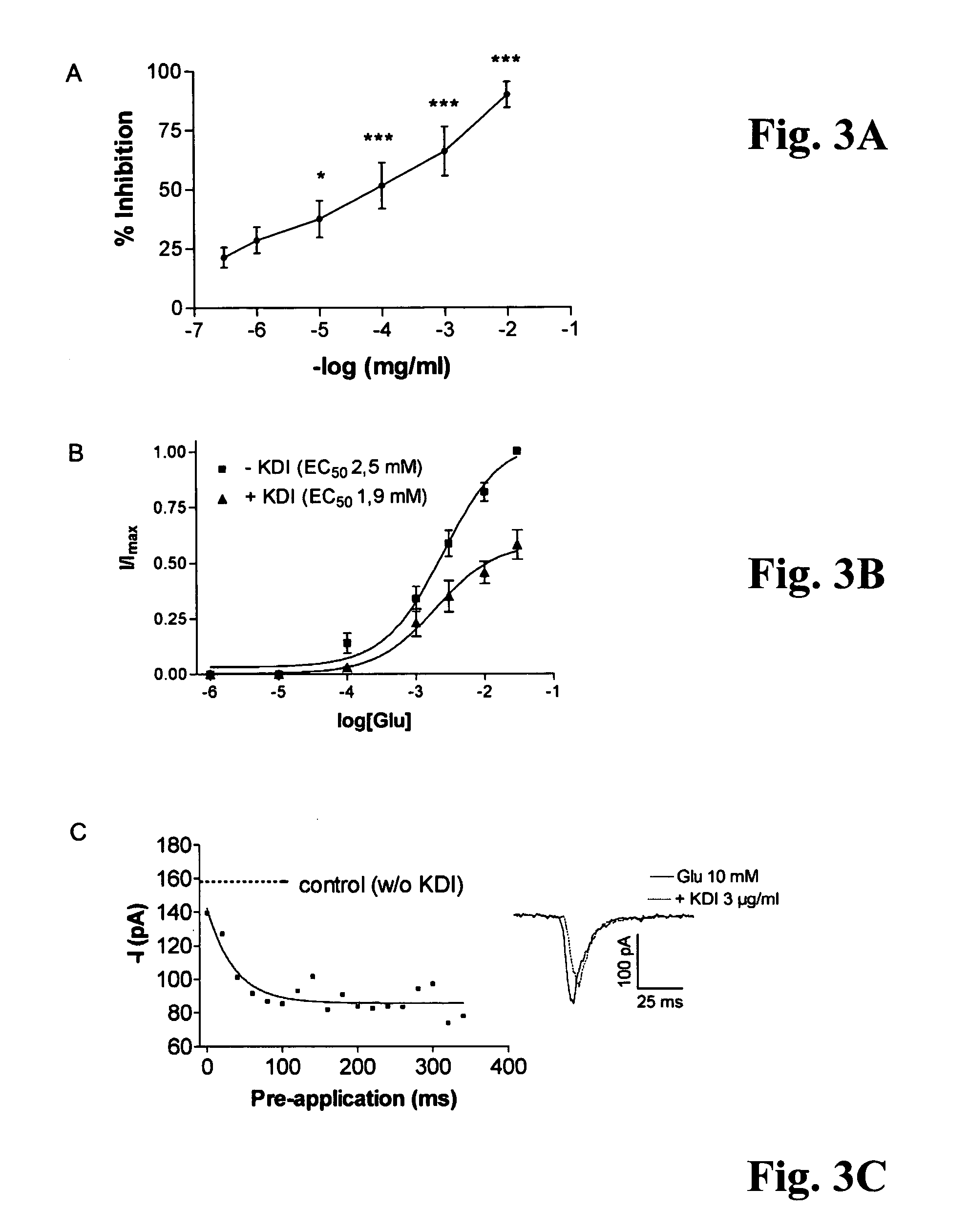Methods of inhibiting glutamate receptors by administering the tripeptide KDI
a tripeptide and glutamate receptor technology, applied in the field of biologically active peptides, can solve the problems of non-competitive, dose-dependent and reversible inhibition
- Summary
- Abstract
- Description
- Claims
- Application Information
AI Technical Summary
Benefits of technology
Problems solved by technology
Method used
Image
Examples
example traces
[0044 of 20 mM glutamate evoked currents in human neocortical neurons in the absence and presence of the KDI peptide (0.1-10 μg / ml) thus indicate that pre-application of KDI produces an inhibition, which is dose-dependent, washable and reproducible. A column presentation of FIG. 2B demonstrates a percentage of inhibition of laminin-1 and its various derivatives on AMPA receptor currents of human neocortical neurons. Laminin-1 (Lam-1), purified from mouse EHS-tumor (Martin and Timpl, 1987), produced a significant (***) inhibition of AMPA currents. P10-OH (RDIAEIIKDI-OH), an acid form of the neurite outgrowth domain of the γ1 laminin also produced effective (***) inhibition of AMPA receptors, whereas P10-NH2, an amide form of the same, was much less efficient (**). The KDI peptide was most efficient (***) in inhibiting AMPA currents, whereas a control peptide from cell attachment domain of β1 laminin (CDPGYIGSR), and a control tri-peptide LRE from β2 laminin did not affect AMPA recept...
PUM
 Login to View More
Login to View More Abstract
Description
Claims
Application Information
 Login to View More
Login to View More - R&D
- Intellectual Property
- Life Sciences
- Materials
- Tech Scout
- Unparalleled Data Quality
- Higher Quality Content
- 60% Fewer Hallucinations
Browse by: Latest US Patents, China's latest patents, Technical Efficacy Thesaurus, Application Domain, Technology Topic, Popular Technical Reports.
© 2025 PatSnap. All rights reserved.Legal|Privacy policy|Modern Slavery Act Transparency Statement|Sitemap|About US| Contact US: help@patsnap.com



